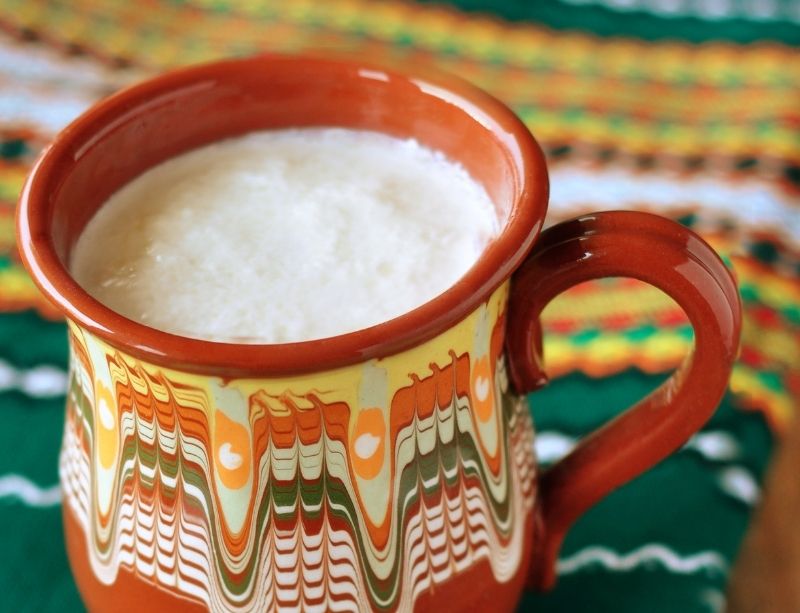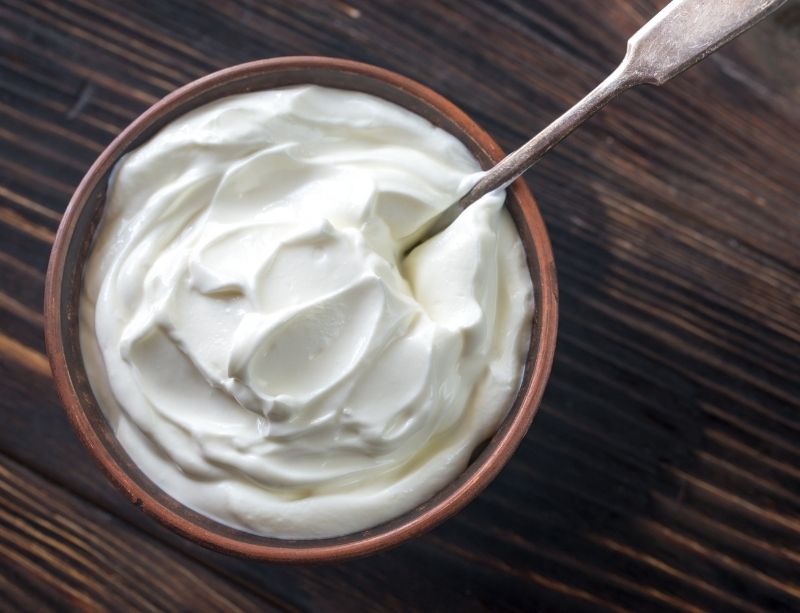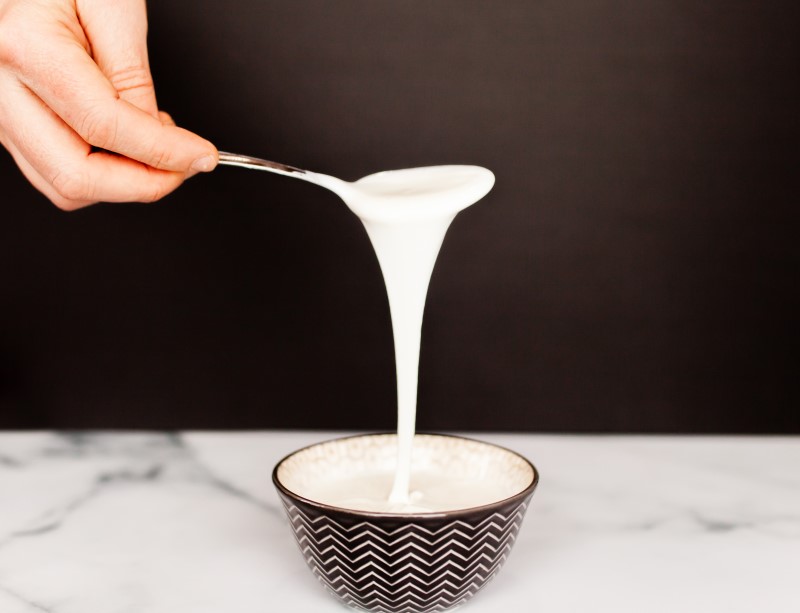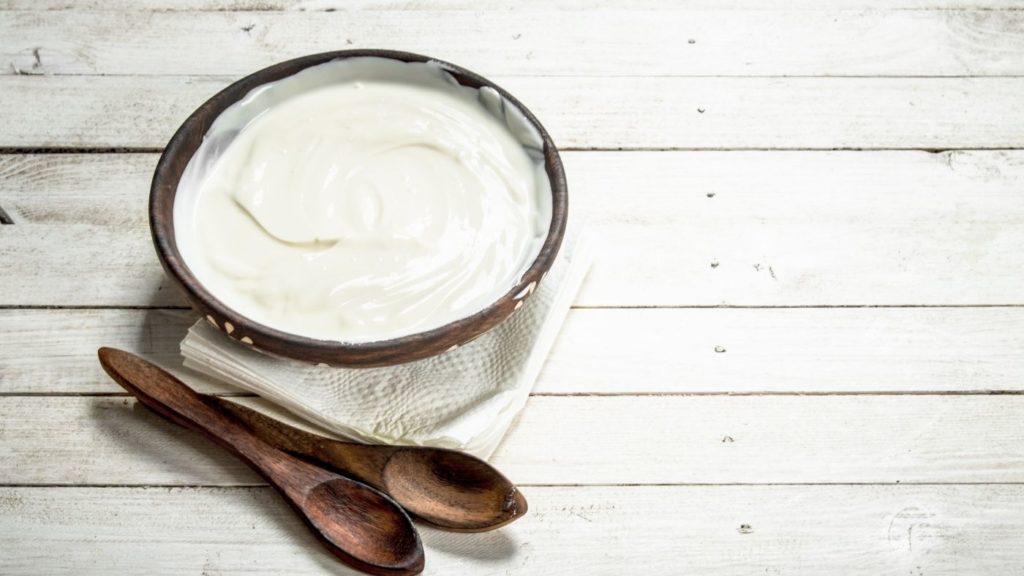You are probably familiar with the standard yogurt found in the grocery store, but have you ever heard of viili, skyr, matsoni, or filmjölk?
There are hundreds of traditional yogurts from around the world, whose origins vary as much as their textures and flavours.
Find out more about traditional yogurts from terroirs of the world, from standard grocery store yogurt to Nordic yogurt that ferments at room temperature!
Where Does Yogurt Come From?
According to some historians, yogurt has been around for over 10,000 years. The first fermented milk appeared with the domestication of dairy animals.
Without refrigeration, the only way to preserve milk was to ferment it! Raw milk was poured into wineskins, where its natural microbial flora went to work.
The microorganisms produced lactic acid, which acidified and thickened the milk, protecting it from harmful microbes.
However, spontaneous fermentations do not always give good results. Fermentation depends on the microorganisms present at the time, and can therefore be very random.

Over time, people have wanted to reproduce the “good” results.
By taking some quality yogurt from a previous recipe, the new milk can be inoculated with the winning mixture of microorganisms, and thus reproduce the same yogurt.
This technique has helped perpetuate many yogurt cultures, all over the world, to reach us today.
Yogurts and Terroir
Yogurt strains are intimately linked to their terroir and area of origin.
The microorganisms present in yogurt culture vary according to the climate, the milk used, the breed of animal that produced the milk, etc.
For example, yogurts from the Middle East must ferment at higher temperatures (about 40°C). The bacteria used are accustomed to warmer climates!
These yogurts are called “thermophilic“, meaning “that like heat”.
As for yogurts from Nordic countries, they contain bacteria that are used to ferment at room temperature. All you have to do is mix milk and a little yogurt from a previous recipe, and let it sit on the counter. That’s it!
These yogurts are called “mesophilic” because they ferment at moderate or room temperature.
Read: How to make traditional mesophilic yogurts
Traditional Versus Industrial Cultures
As of the 19th century, the food industry has sought to produce yogurt on a large scale.
The problem is that the taste and texture of traditional yogurts vary depending on the ambient temperature, the season, the milk used, etc.
This lack of consistency makes marketing difficult. Therefore, the industry has selected specific bacteria in yogurt and multiplied them in laboratories.
Commercial yogurt strains provide consistent and equal results. However, these strains do not have the variety of microorganisms found in traditional yogurts.
Therefore, laboratory cultures cannot be reproduced endlessly nor survive over time.
Yogurts Around the World
The beloved standard yogurt
Yogurt is the most popular fermented milk in the world. Yogurt probably originated in the Middle East, where hot temperatures fermented milk quickly.
In fact, the word “yogurt” comes from the Turkish word yoğurt, which means “that thickens” or “that curdles.”
Yogurt was first produced in Bulgaria and the Balkan region. Even today, traditional Bulgarian yogurt cultures are passed down from generation to generation.
This is also where Lactobacillus bulgaricus and Streptococcus thermophilus yogurt bacteria were identified. If they are not present in fermented milk, this fermented milk cannot be officially classified as yogurt!
While today most yogurts are made from bacterial cultures prepared in laboratories, there are many variants.
For example, Greek yogurt is strained and concentrated yogurt. Other cultures can be enriched with probiotics.
To read: The complete guide to successful homemade yogurt

Creamy Skyr
Skyr is fermented milk somewhere between fresh cheese and yogurt. Native to Iceland, it has been consumed in the country since the 9th century.
In fact, it is mentioned in some epic medieval Nordic sagas. Skyr is described there as everyday food and as the people’s food. It was even served to Egil, the hero.
Originally, skyr was made from fermented milk that was curdled with rennet. It was then strained until it became a fresh, thick, and slightly lumpy cheese.
Today, many producers use only bacterial cultures, which give skyr a very smooth consistency.
Like yogurt, skyr is thermophilic and must be heated and fermented at a higher temperature (about 40°C).
After fermentation, skyr is strained to produce an extremely smooth, high protein yogurt. Its taste and texture are comparable to Greek yogurt.
Delightful Matsoni
Matsoni, also known as matzoon or Caspian Sea yogurt, is a traditional yogurt native to the Caucasus region of Georgia where it has been consumed since the 11th century.
Its taste is sweet, slightly tangy, with delicate notes of honey. It is very similar to standard yogurt but smoother and slightly stickier.
One of its great advantages is that it ferments at room temperature (therefore mesophilic).
In Armenian cuisine, matsoni is left to ferment longer to obtain a nice tangy flavor. Then, it is strained to produce fresh cheese, called kamats-matzoon which is similar to kefir cheese. Matsoni is also used in cakes, or eaten as is.
Stringy Viili
Viili is a very mild yogurt native to Sweden but widely consumed in Finland.
It is very easily fermented at room temperature (like other Nordic mesophilic yogurts). Its main characteristic is its stringy, almost sticky (or gooey) consistency!

This traditional yogurt culture contains lactic acid bacteria and yeast.
Its special texture is due to viilian, long molecules created by bacteria during fermentation.
These long chains of carbohydrates give viili a sticky texture.
Viili has spread around the world thanks to Finnish immigrants. Before leaving their homeland, they soaked a piece of cloth in viili and let it dry.
When they arrived at their destination, they soaked the cloth in fresh milk to obtain their precious viili again. A great way to preserve and perpetuate their culture!
Delicious Filmjölk
Filmjölk is fermented milk native to Sweden. It has been consumed in Nordic countries since the 18th century.
During the Viking era, fermented milk was considered an excellent tonic. Even today, a Swede eats on average 10kg of filmjölk per year!
Depending on its consistency, it can be eaten with a spoon or drunk. It has a slightly more acidic taste than viili, but milder than other yogurts.
Filmjölk stands out with its butter aroma and slightly cheesy taste. It is delicious for breakfast, with muesli or granola.
Like other mesophilic yogurts, it ferments at room temperature, without using a yogurt maker.
Versatile Piimä
Piimä is also native to Nordic countries, particularly Finland. More fluid than other fermented milk, piimä is a delicate drinkable yogurt, with cheesy aromas reminiscent of buttermilk.
It can be compared to milk kefir, but milder.

Its texture and taste are ideal for cooking, where it replaces sour cream and buttermilk. It is suitable for creamy vinaigrettes, pastries (pancakes, cakes) or to add creaminess to soups like borscht.
And All The Others…
It would be hard to name all the yogurts and fermented milk! Koumiss, milk kefir, laban, quark, and all other fermented milk have accompanied and nourished populations through the ages.
By fermenting all these traditional yogurt cultures, we help perpetuate these cultures and traditions through the centuries. There is much more to discover than industrial yogurts!
Plus, traditional yogurts are delicious and easy to make at home!

